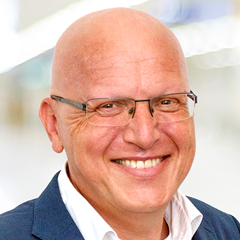ATMPs and Annex 1: Some Answers, but More Questions

With the publication of EU GMP Annex 1: Manufacture of Sterile Medicinal Products on 25 August 2022, the long-awaited wording regarding the final content of the guidance was revealed. The overall implementation date is 25 August 2023, with one exception for Section 8.123 (sterilization of lyophilizers and associated equipment), which goes into effect the following year.
While still viewed as nonbinding for advanced therapeutics medicinal products (ATMPs) throughout Europe and the United States, questions remain as to how the guidance will be viewed in other regions. There are also questions about how Annex 1 will relate to existing guidances for ATMP, such as PIC/S Annex 2A: Manufacture of Advanced Therapy Medicinal Products for Human Use, or Part IV: GMP Requirements for Advanced Therapy Medicinal Products of the EU GMP guidelines. Will the guidance documents be used together or treated as separate requirements?
Applying any guidance to ATMPs is tricky due to the diversity of product types and manufacturing processes that can fall under the ATMP umbrella. Some ATMPs, such as autologous cell-therapy products, return only a few doses to each patient. Other products resemble a traditional biotechnology process on a miniature scale, including all the components of upstream, downstream, formulation and fill/finish on a short timescale. In contrast, others have little differentiation between the process stages. Still, different product types produce doses at a more traditional process scale and lot size.
The diversity of technologies and scales are major drivers in some of the persistent questions being asked about Annex 1 and its relationship to ATMP production. For example, allogeneic and autologous cell-therapy products cannot necessarily be considered sterile products since they are derived from nonsterile patient material collected in the hospital or apheresis center. During manufacturing, however, exogenous contamination should be avoided, so what aspects of Annex 1 will apply to those products? Some products are currently produced within biosafety cabinets (BSC) due to the numerous manual manipulations associated with the individualized batches. With Annex 1 calling for closed systems and providing a clear preference for such barriers as isolators and RABS, how will BSC be viewed in the future since BSC technologies are not seen as a barrier? With autologous or allogeneic processes initiated from a starting point that would normally occur as an upstream biotechnology process, would it be expected that the process is closed from the beginning or only at some penultimate point in the process? Finally, without a sterilizing filtration step to define that boundary in the process, how will that point be defined consistently?
Annex 1 calls for an aseptic process simulation (APS) every six months. Nonetheless, the industry is grappling with identifying what a meaningful APS looks like with nonconventional filling and batch sizes. For instance, with autologous products, each batch is a pressure test for the aseptic capabilities of the processes. With the associated variety of process and scale, is six months the right frequency for the wide diversity of product types represented by ATMPs, or should the frequency be risk-based?
Other topics that will also confound those wanting to apply Annex 1 principles to ATMPs are concepts such as 100% container–closure integrity being applied to small lots of flexible bags and requirements for pre-use post-sterilization integrity testing (PUPSIT). Will PUPSIT apply to raw materials being filtered into a process, like raw material for feed? Or only for finished goods?
While the intent of Annex 1 is clear in terms of improved sterility assurance and enhanced controls, the direction of Annex 1 as it relates to ATMPs is still murky. If PIC/S Annex 1: Manufacture of Sterile Medicinal Products is intended to be related to PIC/S Annex 2A: Manufacture of Advanced Therapy Medicinal Products for Human Use, as mentioned by GMP Inspection Supervisor for Health Canada and PIC/S Chairperson Paul Gustafson, during the 2022 PDA Annex 1 Workshop in Amsterdam, these proposed questions will need answers. Similarly, PDA ATMP Advisory Board member Francesco Cicirello, who chaired the PIC/S working group on the revision of Annex 2A, said that the design of Annex 2A implies the use of Annex 1, with notable exceptions. Annex 2A has mapped the linkages and exceptions to Annex 1. Since new content arose in the final Annex 1 version, however, these linkages may need to be reconsidered or additional links introduced. While a new revision would be the cleanest way to achieve this, regulatory timelines would not favor it. Alternatively, PIC/S could issue a Q&A to address the topics. In addition, PDA and industry associations could provide feedback to this end. It has been nearly two months since the official release of Annex 1, and we have only ten months to conclude the dialogue with regulators to bring the industry closer to implementing an appropriate, consistent interpretation before the August 2023 implementation date.
Despite all the uncertainties and questions posed above, one thing is clear—Annex 1 cannot be ignored for ATMP manufacturing, and it should be seen as a relevant guidance document. ATMP manufacturers are encouraged to develop customized, product-specific, risk-based strategies to meet Annex 1 requirements as closely as possible without compromising the manufacturability of their product.
PDA’s ATMP Advisory Board routinely tackles topics like these and works with PDA volunteers to formulate white papers, develop points-to-consider documents and technical reports (e.g., Points to Consider for Microbial Control in ATMP in Manufacturing) and comment on pending regulation. Keep an eye on the PDA website for upcoming volunteer opportunities so you can participate in these activities or contact an ATMP Advisory Board member to relay your interest. Additionally, watch for announcements about ATMP Interest Group meetings to join the events, make your voice heard via the Interest Group forum on PDA ConnectSM, or submit a stimulus article to the PDA Letter.
Looking ahead to the May 2023 PDA Good Aseptic Manufacturing Conference in Leipzig, Germany, and the June 2023 PDA Advanced Therapy Medicinal Products Conference in Baltimore, Maryland, these thorny issues will no doubt be hotly debated. Case studies outlining approaches being implemented will also begin a healthy debate on the interpretation of the regulatory guidance. While we look forward to this interchange, establishing industry standard practices for most firms cannot come fast enough. The clock is ticking!



 Rebecca Brewer is the Strategic Practice Lead at Quality Executive Partners where she works with customers to promote good aseptic practices and controls. She is a member of the PDA Scientific Advisory Board and the Advanced Therapy Medicinal Products Advisory Board. Brewer is the co-lead for the Sterile Processing Interest Group as well as the newly formed Annex 1 Interest Group. She is an instructor for PDA and ISPE and is currently participating on PDA teams that are updating the technical report for phase-appropriate GMPs and developing points-to-consider documents on both viral vectors and sterile filling.
Rebecca Brewer is the Strategic Practice Lead at Quality Executive Partners where she works with customers to promote good aseptic practices and controls. She is a member of the PDA Scientific Advisory Board and the Advanced Therapy Medicinal Products Advisory Board. Brewer is the co-lead for the Sterile Processing Interest Group as well as the newly formed Annex 1 Interest Group. She is an instructor for PDA and ISPE and is currently participating on PDA teams that are updating the technical report for phase-appropriate GMPs and developing points-to-consider documents on both viral vectors and sterile filling. Richard Denk is the Senior Consultant of Aseptic Processing & Containment at SKAN AG, headquartered in Allschwil, Switzerland. Denk is a PDA ATMP Advisory Board member and chairs the task force on upcoming points to consider on manufacturing ATMPs. Denk also chaired the 2022 PDA ATMP conference in Brussels and was a member of the Program Committee for PDA’s 2022 Annex 1 workshops. Furthermore, Richard is a member of the PDA Isolator Expert Group and an author of the PDA Letter article “Isolator Surfaces and Contamination Risk to Personnel and Patient.”
Richard Denk is the Senior Consultant of Aseptic Processing & Containment at SKAN AG, headquartered in Allschwil, Switzerland. Denk is a PDA ATMP Advisory Board member and chairs the task force on upcoming points to consider on manufacturing ATMPs. Denk also chaired the 2022 PDA ATMP conference in Brussels and was a member of the Program Committee for PDA’s 2022 Annex 1 workshops. Furthermore, Richard is a member of the PDA Isolator Expert Group and an author of the PDA Letter article “Isolator Surfaces and Contamination Risk to Personnel and Patient.”